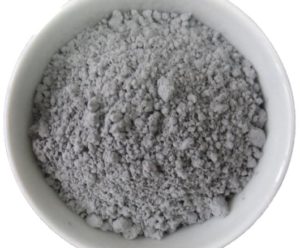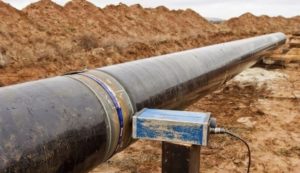Many people believe that to have a good quality Rust Proof Paint it needs to be rust inhibiting, but 3 principles of a good quality rust proof paint do exist. When putting paint systems together to protect a substrate from corrosion a combination of one or more method can exist.
Does all rust proof paint need to contain a rust inhibitor? No
What’s a rust inhibitor?
Rust inhibitors in paints can be pigments like zinc phosphate, zinc, read lead, calcium plumbate, zinc chromate.
 Zinc Phosphate Pigment
Zinc Phosphate Pigment
Inhibitive pigments work by anodic and/or cathodic polarisation of the metal substrate. The soluble particles of some types of rust inhibitive pigment react with the moisture as it passes through to the metal making it non-corrosive. Red Lead and Calcium Plumbate are a lot more basic pigments and react with acidic components of the vehicle to form an inhibitor.
This corrosion protection method is called Passivation.
What are the other principles of Corrosion Protection?
We have spoken above about rust inhibitive pigments that retard corrosion by chemical reaction between the pigment and moisture, but what are the other principles?
- The Barrier Principle
- Cathodic Protection
The Barrier Principle

RNLI Sea tractors coated in EM121 to restrict salt water ingress to the steel surface
The substrate is isolated from the environment which causes corrosion by using a coating which has a low permeability to moisture and air.
Cathodic Protection

Zinc plates coupled directlty to steel pipeline
This is achieved by coating the substrate with a paint containing liquid metallic pigments usually Zinc (sometimes aluminium) these pigments are of a lower nobility to the metal being coated. Cathodic protection can also be achieved by means of metal coatings such as zinc galvanizing.
In conclusion,
Three Corrosion protection methods in paint exist,
- Passivation – Rust Inhibiting.
- The Barrier Principle – suffocating the coated surface of moisture and oxygen.
- Cathodic Protection – Sacrificing a pigment to stregthen and protect the surface.
If you want a simple product to paint your gates or railings at home with minimal preparation then a simple rust inhibiting paint will do, this will Passivate corrosion for a while.
If you are prepared to break out some mechanical tools and spend longer preparing the surfaces to a higher level then a good quality Epoxy coating will serve you very well, suffocating the surface from moisture and oxygen these systems provide a Barrier.
If you really want to go all out and have parts blast cleaned, then coated in either a Zinc Rich Epoxy (combining Barrier/Cathodic protection principles) or galvanised you’ll have a worry-free system for years but be prepared to spend some serious cash. Cathodic protection is used on Ships and oil platforms across the world due to its ability to perform in the harshest environments.
What would I use?
All 3 to be honest. Theres a reason Hammerite still sells, if used the correct way it will work and last. If I was maintaining my vehicle, I would use Rustbuster Em121 as the barrier principle and binder type works best.
If I had the opportunity to blast clean and galvanise, would I? hmm that really does depend on what it is being coated, I personally hate the look of freshly galvanised metal.
So that’s it, makes sense to me, I think.
I’m always around the office so if I can help with a quick call or email, please contact me.

Chris Allen
ICorr Level 2 Coating Inspector
Rustbuster MD, 29 years selling coatings




